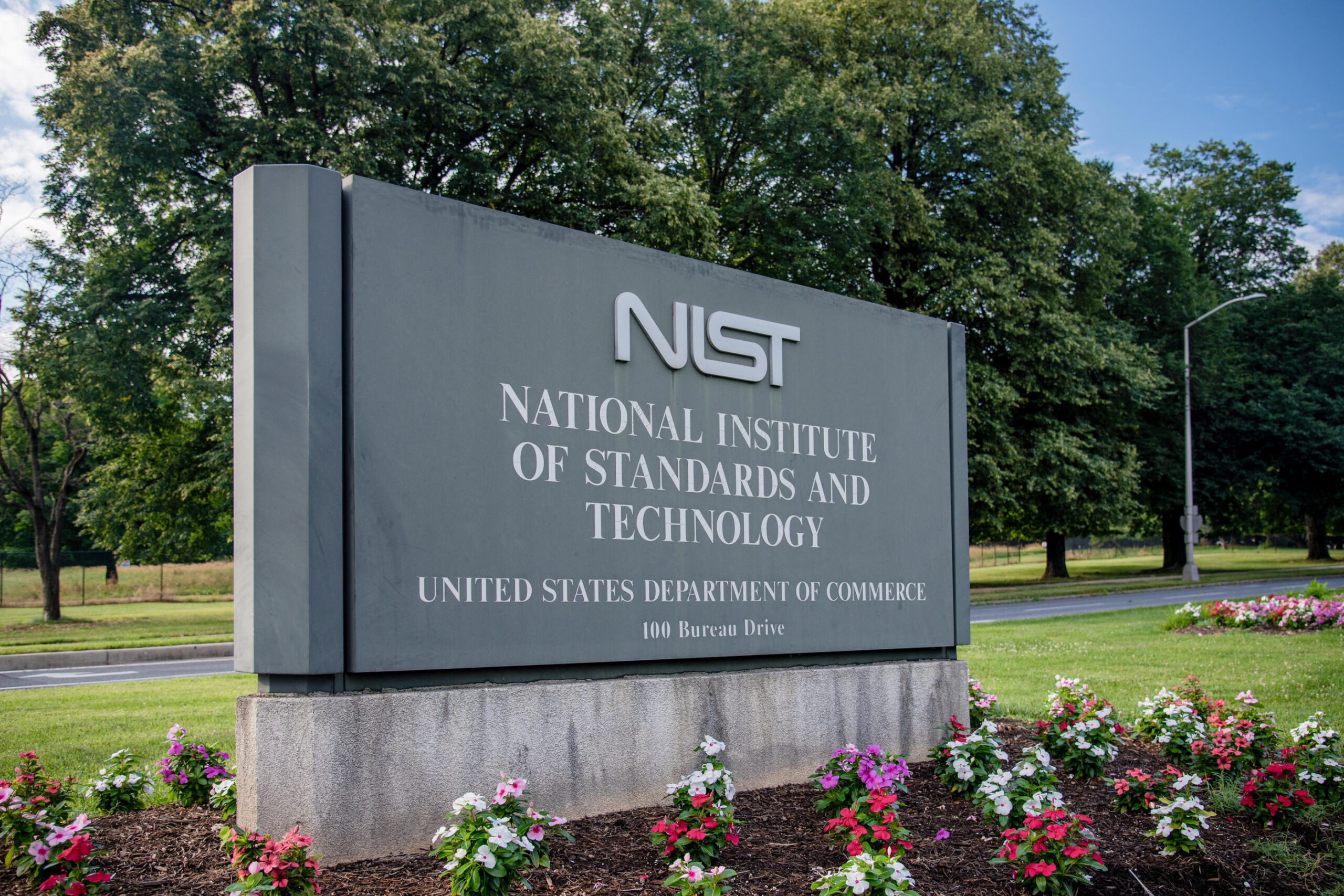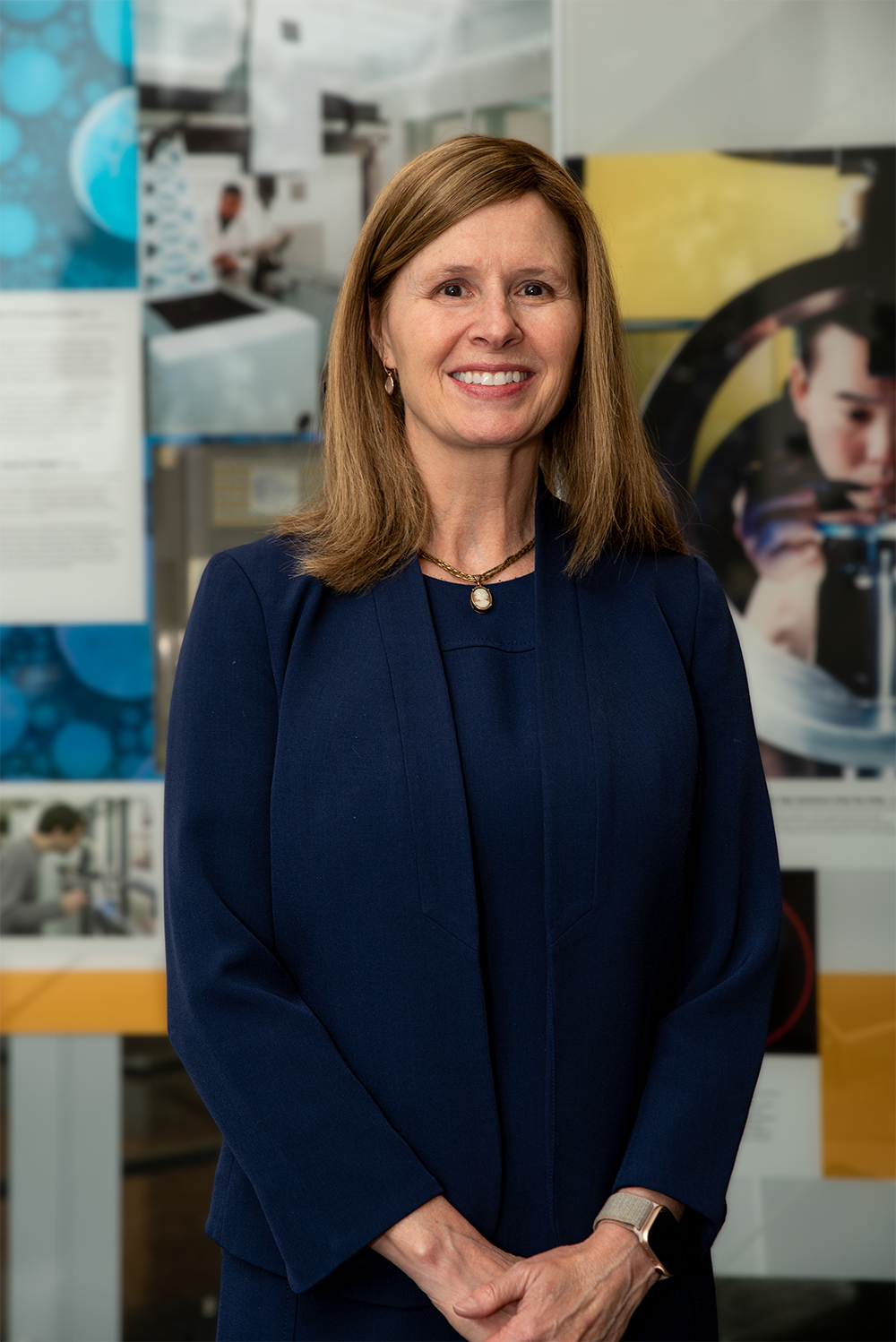NIST: Advancing Innovation for Economic Competitiveness
Laurie Locascio
Director
National Institute of Standards and Technology
Sponsored by PSW Science Members Larry Millstein & Robin Taylor
About the Lecture

NIST from its inception has played an important role in stimulating U.S. competitiveness. The CHIPs Plus Science Act gave NIST significant new resources and responsibilities to advance the development of emerging technologies, expand U.S. engagement in standards development, and strengthen the domestic manufacturing ecosystem. Under Secretary Locascio will share her vision and priorities for NIST and provide an update on the steps that NIST is taking to ensure a vibrant U.S. innovation ecosystem that revitalizes American manufacturing, grows a skilled and diverse workforce, and ensures future U.S. economic security.
About the Speaker

Laurie E. Locascio is the 17th director of NIST and the fourth Under Secretary of Commerce for Standards and Technology. Previously, Laurie was Vice President for Research at the University of Maryland College Park and the University of Maryland Baltimore, and also was Professor of Bioengineering and Professor of Pharmacology. Before joining the University of Maryland, she worked at NIST for 31 years, starting as a research biomedical engineer, rising to lead NIST’s Material Measurement Laboratory, one of NIST’s largest scientific labs, and to serve for a time as Acting Associate Director for Laboratory Programs. As director of MML, Laurie oversaw 1,000 research staff in eight locations around the United States and a $175 million annual budget. As NIST Director she is now responsible for all NIST operations involving over 3,400 NIST employees at numerous locations and an annual budget exceeding one billion dollars.
Laurie’s research has focused on microfluidics and microfluidic devices, including micro-assays and lab-on-a-chip devices. She has published 115 scientific papers and has received 12 patents in the fields of bioengineering and analytical chemistry.
Laurie is a Fellow of the National Academy of Inventors, the American Chemical Society (ACS) and the American Institute for Medical and Biological Engineering. Among many honors and awards, she is the recipient of the ACS Barnes Award for Leadership in Chemical Research Management, the Washington Academy of Sciences Special Award in Scientific Leadership, the Department of Commerce Silver and Bronze Medal Awards, the ACS Division of Analytical Chemistry Findeis Award, and NIST Safety and Applied Research Awards.
Laurie earned a BS in Chemistry from James Madison University, an MS. in Bioengineering from the University of Utah, and a PhD in Toxicology from the University of Maryland Baltimore.
Minutes
President Millstein called the meeting to order at 8:05 PM. He welcomed everyone, thanked sponsors and announced new members. Janice Soreth read the minutes of the previous meeting and the lecture by Yuichi Tsuda on the Hayabusa2 Mission. President Millstein then introduced the speaker - Laurie Locascio the 17th Director of the National Institute of Standards and Technology.
Locascio said she was honored to speak and that she had greatly enjoyed discussions about fluid mechanics and AI at the pre-lecture reception and dinner. She then turned to the topic of her lecture: the National Institute of Standards and Technology.
She began by noting that NIST does measurement science and that quantitative measurement capacity is essential to all research & development activities, to manufacturing, and to competing in the global marketplace. She noted that NIST has an annual budget of over 1.6 billion dollars and a workforce of more than 7,000 federal and other workers at its main facilities in Maryland and Colorado and at a number of joint institutes. She also noted that NIST works closely with academia and industry.
NIST is structured along three programmatic lines: Laboratory Programs that establish standards and provide calibration services to enable competitiveness; Innovation and Industry Services that serve the measurement and standards needs of US industry, primarily through extramural means; and the CHIPS for America program to develop an integrated ecosystem for US leadership in integrated circuit technology.
Locascio then said that NIST has three scientific and technical priorities for maintaining US industrial leadership and maintaining the ability of the US to compete in the global marketplace: critical and emerging technologies leadership, particularly in emerging fields; standards leadership; and manufacturing leadership.
She explained that the CHIPS Act is designed to ensure US global leadership and that China is a particular concern. She displayed a graph showing the growth of China's R&D spending, noted that it is now second only to that of the US, and that it is on a curve to surpass it.
China and other competitors play by different rules she said, noting that China has a national industrial policy that targets specific strategic industries and supports them with large scale and well-funded centralized government programs, quite different from the current US approach to industrial competitiveness.
The CHIPS Act, she explained, is one strategy of the current administration to maintain US leadership and competitiveness in the face of such competition from China and other countries. It is an estimated $52 billion bet on US science and technology, along the lines of the Manhattan Project, the Apollo Project, and the Human Genome Project. $39 Billion is to drive expansion of US semiconductor manufacturing capacity, attract large-scale investments in advanced technologies, and advance US technical leadership in related critical technologies, she said. And $11 Billion is for R&D, particularly a National Semiconductor Technology Center, a National Advanced Packaging Manufacturing Program, Manufacturing USA institute(s), and R&D at NIST. Grand National Technology and Industrial programs like this are not common in the US, she said, but the few that have been instituted have been instrumental in advancing critical technologies, and she expects that CHIPS also will be transformative and create a robust ecosystem that will ensure US technological and industrial leadership.
With that, Locascio closed her lecture and invited questions from the audience.
One member asked how NIST decides what to fund and how markets figure into the decisions. The speaker answered that NIST not only responds to markets but also creates them, pointing out that NIST has programs specifically aimed to ensure fields are funded at the earliest stages of development.
Another member asked how NIST controls its intellectual property to ensure that it primarily benefits the US. The speaker explained that NIST is required to patent inventions and license technologies and it has a strong technology transfer program. And she noted in passing that she herself has twelve patents through NIST.
After the question and answer period, President Millstein thanked the speaker, announced up-coming lectures and thanked volunteers. He asked everyone interested in helping out to contact him, and at 9:51 PM he adjourned the meeting.
Temperature in Washington, DC: 19° C
Weather: Clear
Live Audience 51: 30 in the Powell and 21 on the Live Stream
Views of the recording on the PSW Science YouTube Channel in the first two weeks: 221
Respectfully submitted,
Mark Clampin on behalf of President Larry Millstein and Recording Secretary Cameo Lance